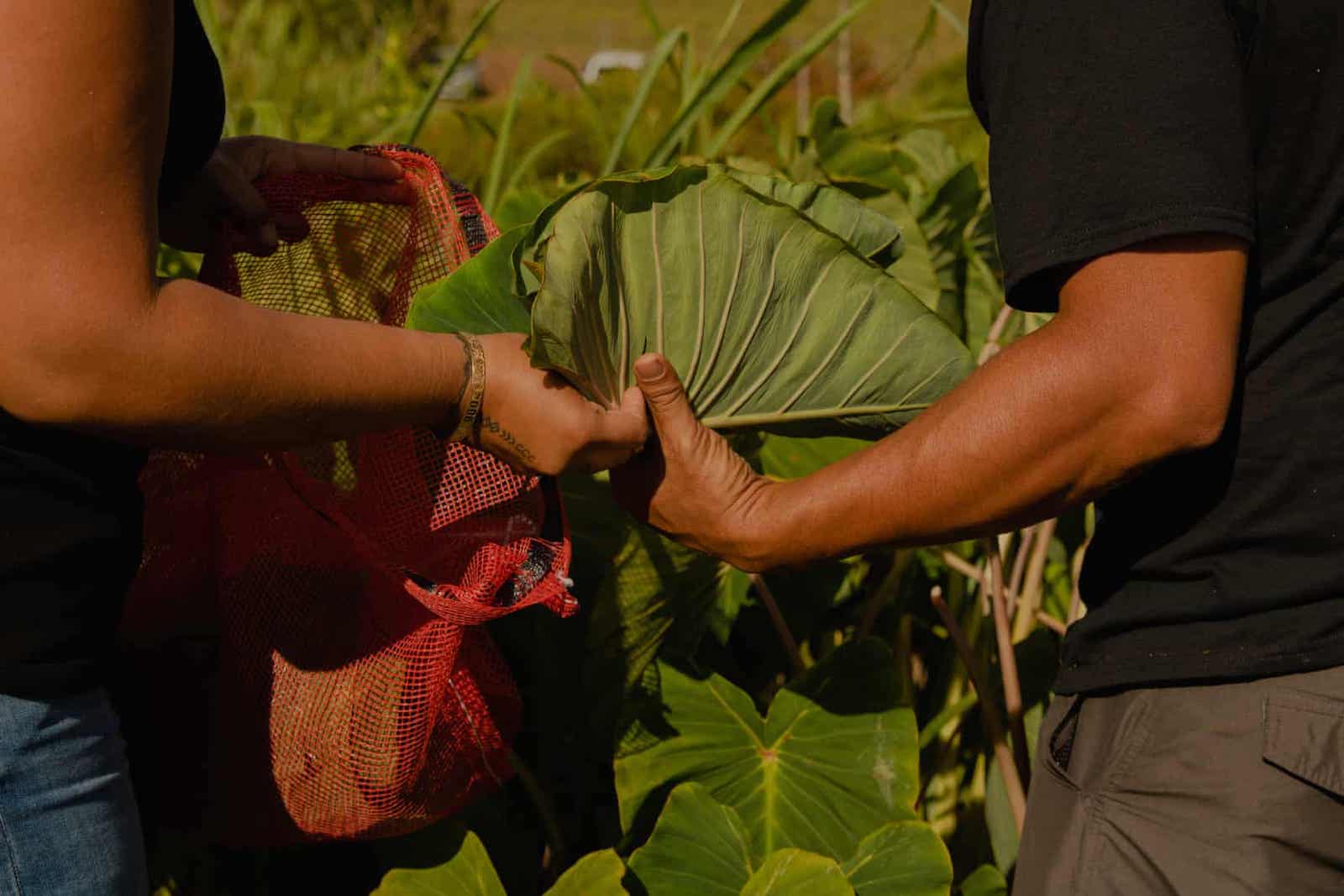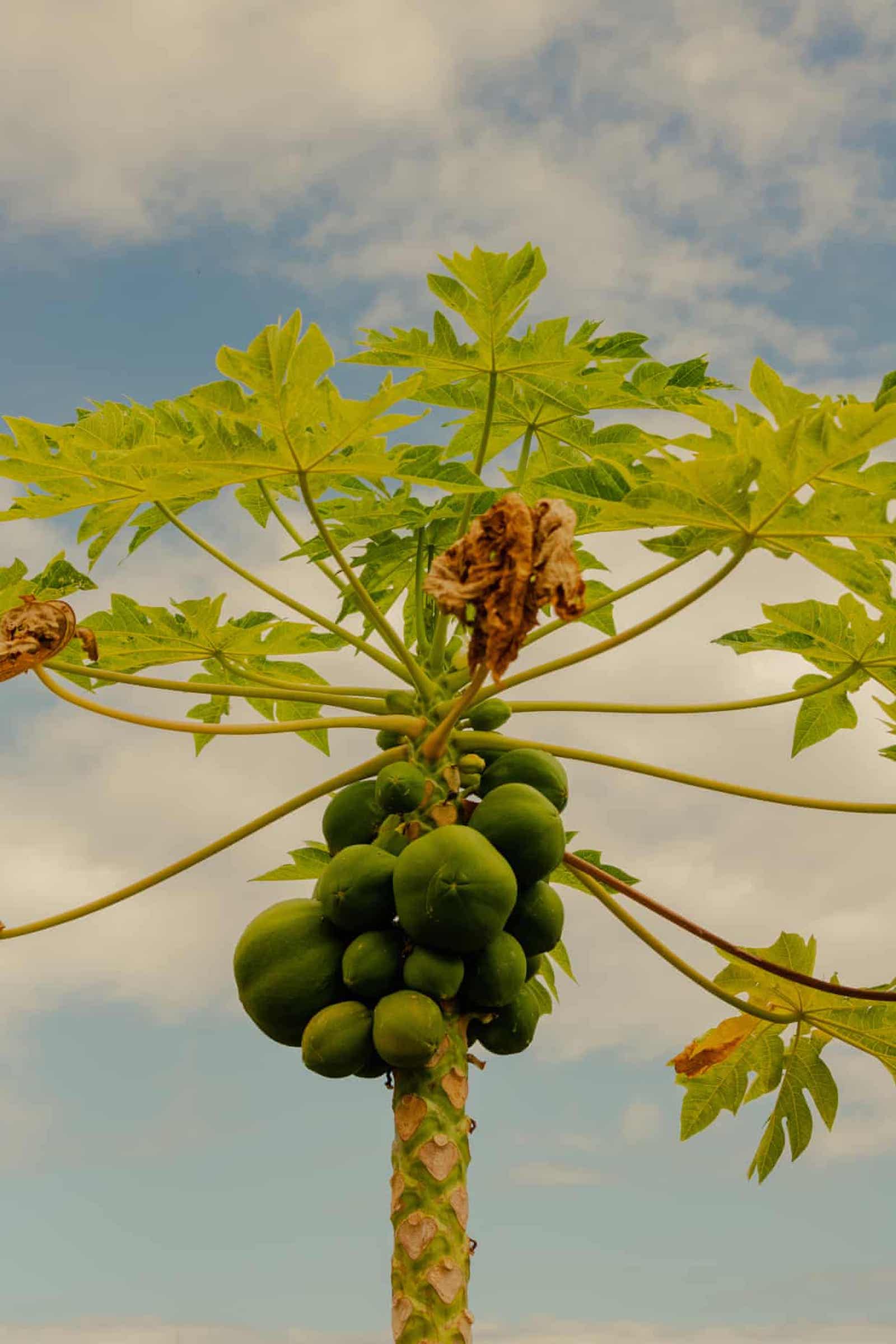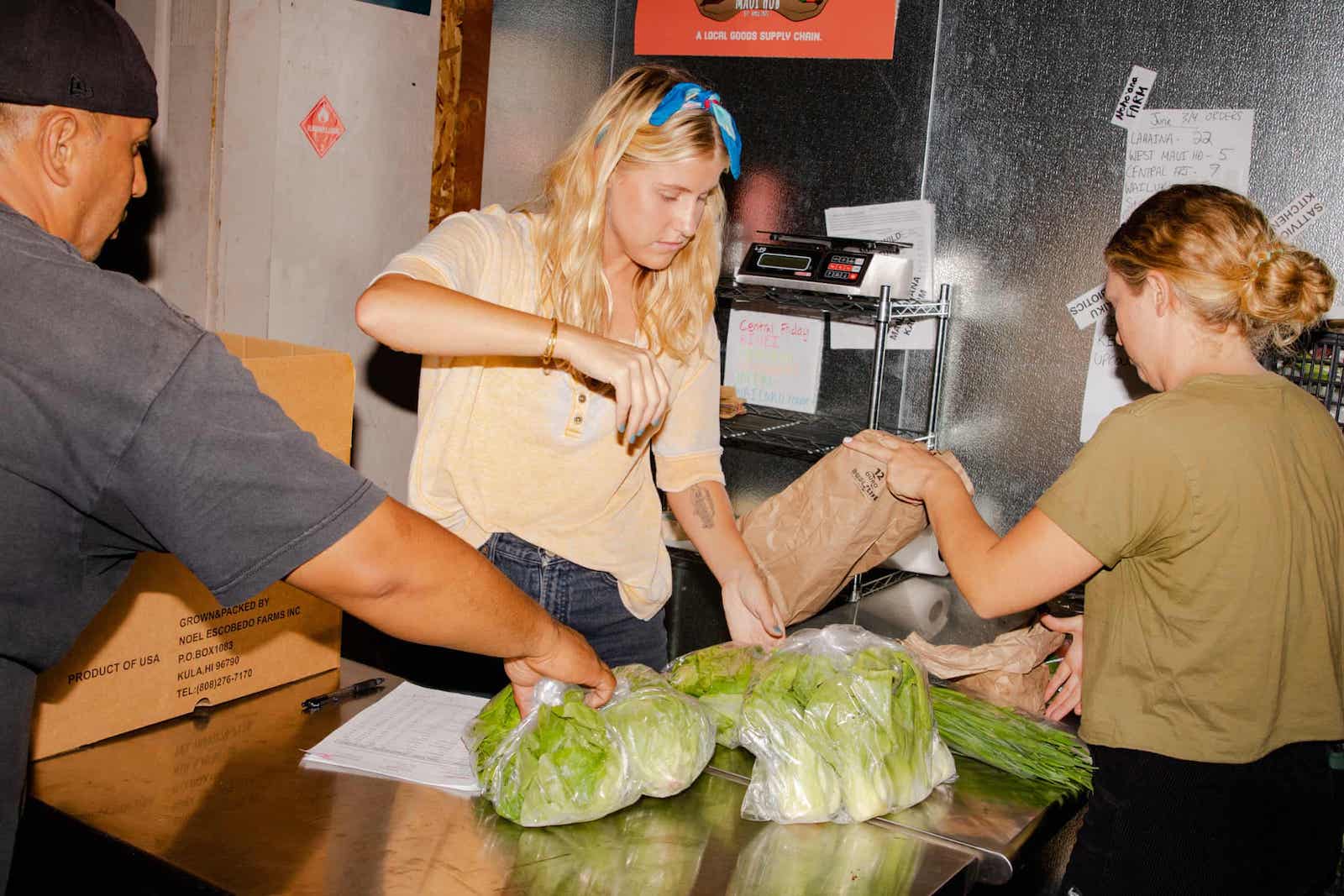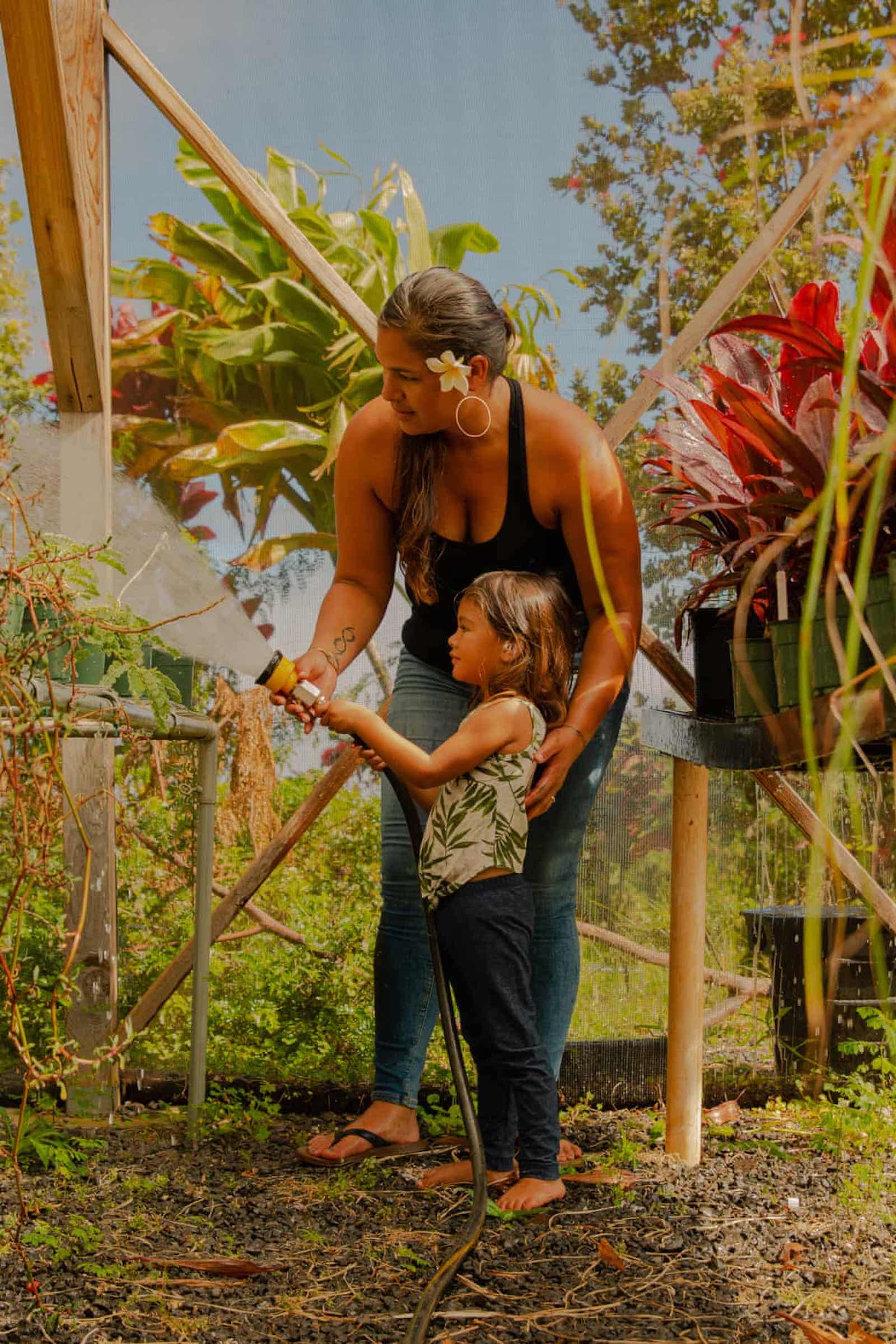This tale was initially posted by The Guardian and is reproduced below as part of the Climate Desk collaboration.
Rain clouds cover the peaks of the west Maui mountains, a single of the wettest spots on the earth, which for hundreds of years sustained biodiverse forests delivering abundant food stuff and medicines for Hawaiians who took only what they needed.
Individuals times of abundance and food items sovereignty are extensive gone.
Rows of limp lemon trees struggle in windswept sandy slopes depleted by many years of sugarcane cultivation. Agricultural runoff choking the ocean reef and drinking water shortages, linked to more than-tourism and worldwide heating, threaten the long run viability of this paradise island.
Between 85 percent and 90 % of the meals eaten in Maui now will come from imports when eating plan-associated illnesses are soaring, and the state allocates a lot less than just one % of its spending budget to agriculture.
Downslope from the rain-soaked summits, there is historic drought and degraded soil.
“We imagine that land is the main, the people its servants,” claimed Kaipo Kekona, 38, who with his wife Rachel Lehualani Kapu have remodeled a number of acres of depleted farmland into a dense food stuff forest on a mountain ridge.
The soil there is as soon as once again complete of lifetime, with wriggly worms and multi-colored bugs busy among the layered roots and mulch. This food stuff forest gives a glimpse of the ancient forests that for millennia thrived on these slopes till currently being burnt many periods to build cropland – a cultural and ecological tragedy documented in classic tracks, chants, and tales.
The few are Indigenous farmers – historical knowledge keepers – and element of a broader food items and land sovereignty motion getting momentum in Hawaii.

Bea Oyster / The Guardian
It is a large problem. Traditional Hawaiian farmers have to contend not only with historic drought, erratic rainfall and lethal all-natural pathogens but also the dominance of industrial agriculture and overseas capital in Hawaii. The point out grew to become the biotech GMO cash of the US soon after agrochemical transnationals had been welcomed to open analysis fields with less limitations on probably harmful pesticides.
In Kekona and Kapu’s food forest in Maui there are no pesticides or artificial fertilizers. Protect crops and tilling are also out. “Traditional farming is about facilitating normal procedures in order to feed the soil so that the land can feed us,” stated Kekona.
Indigenous farming methods in Hawaii are guided by the lunar cycle and wind styles, understanding which was also handed down orally above generations, and even documented in newspaper articles or blog posts likely back to the 19th century. These oral histories and archives have performed a crucial role in how farmers like Kekona, who did not improve up speaking the Hawaiian language because of to compelled assimilation insurance policies, steward the land these days.
The whole island was once a huge thriving food items forest until finally colonial settlers in the 18th and 19th century stole the land, h2o and labor to develop industrial monocrop plantations – mostly sugar and pineapples for export. This depleted the soil of its vitamins, carbon and h2o, and the Maui men and women of foods and weather safety.
“The intention is to knock the empire down and exchange individuals corporate ag guys with one thing far more environmentally sustainable which reflects our values,” said Kekona, who is part of the Indigenous sovereignty movement reconnecting Hawaiians with their lands and traditions.
Organized chaos
A cover system is central to a foods forest. On Kekona’s farm, sugar cane, papaya, coconuts, mangoes, espresso, and candle nut trees supply shade and absorb drinking water, nutrition, and leaf litter, while mosses and ferns assistance suppress weeds and distract insects. In between are the income crops such as the starchy root vegetable kalo or taro – a classic Hawaiian staple revered as an ancestor – sweet potatoes, breadfruit, turmeric, and peppers, even though other nutrient prosperous crops are mainly utilised for mulching or fertilizer.
It appears chaotic as opposed with orderly monocropping but each plant requires what it desires to thrive, when contributing to the advancement and development of its friends and foreseeable future generations. The 30 moon phases utilized in the common Hawaiian calendar dictate when to plant, weed, drinking water and harvest.

Bea Oyster / The Guardian
Cardboard, compost and natural mulch are layered like lasagne to regenerate the soil, even though beds created from logs build inviting nooks for microbes to prosper. Fish carcasses, seaweed, shells, and other ocean scraps are combined with fermented crops this sort of as coffee husks to make natural fertilizer – a Korean strategy tailored for Maui.
Not like industrial agriculture, variety is crucial: there are nine varieties of avocado and coconuts, a few indigenous bananas, 6 sweet potatoes, and 27 forms of kalo in orange, purple, and brown. Some are coveted for the starchy sweet roots employed for porridge, many others generate tastier leaves and stems for stews, and just one wide variety smells and preferences just like popcorn. Drought-tolerant versions are turning into significantly crucial.
Non-indigenous species this sort of as passionfruit, lemongrass, papaya, perennial peanuts, and espresso are cultivated to enrich the soil with vitamins and minerals this sort of as nitrogen, give shade or wind protect, or just because they taste great.
“It’s a continual cycle, anything present alongside one another at the very same time, with crops normally feeding the soil and nurturing every single other,” stated Kekona. “This is the essence of the forest meals procedure, which our ancestors handed down to us above centuries.”
Maui is 1 of the largest islands in Hawaii, a Polynesian archipelago positioned 2,500 miles from the west coast of the US mainland, producing it just one of the most remote populated land masses on the earth . It is a subtropical biodiversity hotspot, where by flora and fauna adapted more than millennia to a extensive vary of ecosystems and microclimates, but ecological destruction more than the earlier century or so has also made it the extinction money of the globe.
At its coronary heart, the classic Hawaiian farming eyesight is about building a sustainable relationship amongst community and agriculture by re-setting up the connection between culture and land. It isn’t just about on the lookout again, but somewhat mixing ancient regenerative farming tactics with fashionable tools and systems to satisfy the local weather and foodstuff issues facing Hawaii in the 21st century.
It’s not easy. Accessibility to land, water, credit, and housing continues to be disproportionately managed by the economic and political elites, particularly huge ag and tourism.
A person business, Monsanto, now owned by the German pharma huge Bayer, operates on Oahu, Molokai and Maui – where it develops genetically modified corn varieties applied in cooking oil, processed foods, alcohol, and animal feed, tests new seeds with an unidentified mixture of probably poisonous agrochemicals.
Bayer is amid four agrochemical businesses that command 60 percent of the world-wide seed industry, and much more than 80 p.c of pesticide profits.
Darkish red grime from Maui’s study and development fields, which are surrounded by 3 types of metallic fencing, distribute across the downwind household spots, with great particles coating home furniture even when the windows are held shut.
Last year, the company was fined $22 million immediately after pleading guilty to several legal fees for the illegal use, storage, and disposal of harmful and banned chemical substances. Monsanto was described as “a serial violator of federal environmental laws” by a Department of Justice legal professional.
The Guardian’s ask for to visit the Maui analysis services was denied.
More than the previous ten years agrochemical organizations like Monsanto have employed lawsuits and political lobbying to delay and restrict laws on GMO crops and pesticides in Hawaii, convincing many farmers and lawmakers that without them, agriculture would collapse.
But the pandemic uncovered the potential risks and fragility of the international industrialized foodstuff procedure, triggering an almost existential disaster for island communities like Maui which is dependent on imports and tourism for economic and foods safety.

Bea Oyster / The Guardian
“Letting a chemical firm pollute the island to feed the world though we endure foods insecurity is past ironic,” said Autumn Ness, the Hawaii system director of Over and above Pesticides and co-founder of the Maui Hub, the island’s initially farm box plan which connects small farmers and producers to residents.
“What’s halting Hawaii feeding its own individuals is not deficiency of awareness or techniques, it is the power framework, the ongoing plantation mentality which suggestions the scales in favor of large ag and builders whilst rubbishing classic information. We need to have to improve this narrative because, without having radical changes, what will be still left of this put in a hundred many years?”
A Bayer spokesperson stated the company’s exploration “diligently complies with federal and condition pesticide rules … We put the best priority on the basic safety of our products and on the sustainability of the land exactly where we stay and function.”
Forest families
At Hōkūnui farm in the central valley, 37-calendar year-old Koa Hewahewa and his family members of foresters blend generational Indigenous know-how and modern systems to repair service the damage caused by intensive cattle ranching and many years of pesticides and synthetic fertilizers.
The restoration task is basically about cooling the local climate to return the rains and pollinators – the forest birds that ended up wiped out or forced to bigger altitudes to evade avian malaria-transmitting mosquitoes. (The mosquito line, the altitude at which the bugs can not endure due to the fact it is too chilly, has risen greatly owing to deforestation.)

Bea Oyster / The Guardian
The forest is deemed akin to an extended household, fairly unwieldy and unpredictable but resilient and more powerful collectively than apart. The lofty flowering acacia and myrtaceae trees are all-natural-born givers, capturing fog and rain to distribute humidity outwards like a garden sprinkler and down to recharge aquifers. Although the groundcover vegetation these kinds of as mosses and ferns act like a dwelling mulch and produce a healthful ecosystem for all sorts of valuable microorganisms.
So significantly they have reworked 25 acres of lifeless land into a flourishing, arranged jumble of edible and non-edible co-dependent crops, a procedure the family call Polynesian agroforestry.
Hewahewa stated: “Our yields are unable to match industrial farming but our return on financial commitment is the healthy land and water we’ll leave for our young ones … this is not just about bringing back the rains, it’s the suitable factor to do as Hawaiians.”



